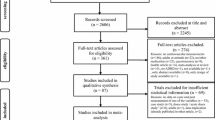Abstract
Millions of children with attention deficit hyperactivity disorder (ADHD) are treated with stimulant medications. To evaluate cardiovascular risk, 24-h ambulatory blood pressure monitoring (ABPM) was performed on and off medication. Thirteen subjects underwent APBM both on stimulant therapy and placebo using a placebo-controlled, double-blind, randomized, cross-over design. After a 3-day run-in followed by a 24-h monitoring period, subjects crossed over to the alternate therapy for repeated ABPM. Subjects demonstrated elevations in most hemodynamic parameters derived from ABPM during the active treatment period. Total diastolic blood pressure (69.7 mmHg vs 65.8 mmHg, p =0.02) and waking diastolic blood pressure (75.5 mmHg vs 72.3 mmHg, p =0.03) were significantly higher during active treatment. Total heart rate was also significantly higher during active treatment (85.5 beats/min vs 79.9 beats/min, p =0.004). The rate-pressure product (the product of systolic blood pressure × heart rate), an index of myocardial oxygen demand, was higher during active treatment (9,958 vs 9,076, p =0.008). This study provides evidence for a possible negative cardiovascular effect of stimulant medications in children with ADHD. This potential cardiovascular risk should be balanced against the beneficial behavioral effects of this class of medication.

Similar content being viewed by others
References
Barkley RA (1998) Attention-deficit hyperactivity disorder: a handbook for diagnosis and treatment. Guilford, New York
Safer DJ, Zito JM, Fine EM (1996) Increased methylphenidate usage for attention deficit disorder in the 1990s. Pediatrics 98:1084–1088
Zito JM, Safer DJ, DosReis S, Gardner JF, Magder L, Soeken K, Boles M, Lynch F, Riddle MA (2003) Psychotropic practice patterns for youth: a 10-year perspective. Arch Pediatr Adolesc Med 157:17–25
Martin WR, Sloan JW, Sapira JD, Jasinski DR (1971) Physiologic, subjective, and behavioral effects of amphetamine, methamphetamine, ephedrine, phenmetrazine, and methylphenidate in man. Clin Pharmacol Ther 12:245–258
Aman MG, Werry JS (1975) The effects of methylphenidate and haloperidol on the heart rate and blood pressure of hyperactive children with special reference to time of action. Psychopharmacologia 43:163–168
Ballard JE, Boileau RA, Sleator EK, Massey BH, Sprague RL (1976) Cardiovascular responses of hyperactive children to methylphenidate. JAMA 236:2870–2874
Volkow ND, Wang GJ, Gatley SJ, Fowler JS, Ding YS, Logan J, Hitzemann R, Angrist B, Lieberman J (1996) Temporal relationships between the pharmacokinetics of methylphenidate in the human brain and its behavioral and cardiovascular effects. Psychopharmacology (Berl) 123:26–33
Joyce PR, Donald RA, Nicholls MG, Livesey JH, Abbott RM (1986) Endocrine and behavioral responses to methylphenidate in normal subjects. Biol Psychiatry 21:1015–1023
Hanevold C, Waller J, Daniels S, Portman R, Sorof J (2004) The effects of obesity, gender, and ethnic group on left ventricular hypertrophy and geometry in hypertensive children: a collaborative study of the International Pediatric Hypertension Association. Pediatrics 113:328–333
Deedwania PC (1990) Transient myocardial ischemia and its relation to determinants of myocardial oxygen demand. Am J Cardiol 66:25G–27G
Soergel M, Kirschstein M, Busch C, Danne T, Gellermann J, Holl R, Krull F, Reichert H, Reusz GS, Rascher W (1997) Oscillometric twenty-four-hour ambulatory blood pressure values in healthy children and adolescents: a multicenter trial including 1,141 subjects. J Pediatr 130:178–184
Pataki CS, Carlson GA, Kelly KL, Rapport MD, Biancaniello TM (1993) Side effects of methylphenidate and desipramine alone and in combination in children. J Am Acad Child Adolesc Psychiatry 32:1065–1072
Wilens TE, Hammerness PG, Biederman J, Kwon A, Spencer TJ, Clark S, Scott M, Podolski A, Ditterline JW, Morris MC, Moore H (2005) Blood pressure changes associated with medication treatment of adults with attention-deficit/hyperactivity disorder. J Clin Psychiatry 66:253–259
Sorof JM, Portman RJ (2000) Ambulatory blood pressure monitoring in the pediatric patient. J Pediatr 136:578–586
Stowe CD, Gardner SF, Gist CC, Schulz EG, Wells TG (2002) 24-hour ambulatory blood pressure monitoring in male children receiving stimulant therapy. Ann Pharmacother 36:1142–1149
Author information
Authors and Affiliations
Corresponding author
Rights and permissions
About this article
Cite this article
Samuels, J.A., Franco, K., Wan, F. et al. Effect of stimulants on 24-h ambulatory blood pressure in children with ADHD: a double-blind, randomized, cross-over trial. Pediatr Nephrol 21, 92–95 (2006). https://doi.org/10.1007/s00467-005-2051-1
Received:
Revised:
Accepted:
Published:
Issue Date:
DOI: https://doi.org/10.1007/s00467-005-2051-1




